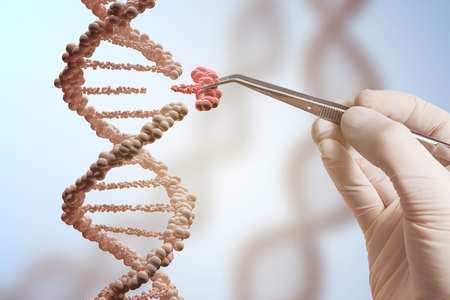New research suggests the use of CRISPR to edit mutations in muscle stem cells (MuSCs) could be an effective long-term treatment for Duchenne muscular dystrophy (DMD).
DMD is a genetic disorder caused by a mutation in a gene on the X chromosome that stops cells from producing a protein called dystrophin. Dystrophin is essential for maintaining muscle strength and function and the lack of the protein leads to progressive loss of muscle strength and function. The disease is fatal and without treatment patients rarely survive past their teens. With appropriate cardiac and respiratory care, life expectancy can be increased and patients can live until their thirties or forties. The disease affects approximately 1 in 3,500 males and there are around 250,000 individuals with DPD living in the United States.
Several studies have been conducted using CRISPR to edit the dystrophin mutation in dogs and rodents which have resulted in improvement in muscle function, but since the edited muscle cells wear out over time, further treatment is likely to be required to prevent a relapse.
Now researchers at the University of Missouri School of Medicine investigated whether they could use CRISPR to edit out the mutation in muscle stem cells. if successful, when the muscle cells wear out, they would be replaced with cells that carry an edited version of the dystrophin gene capable of generating a viable dystrophin protein. That would mean DPD could potentially be cured with a one-time CRISPR treatment.
The UMSM researchers delivered CRISPR via the adeno-associated virus serotype-9 (AAV9) which has already been approved by the FDA for treating spinal muscular atrophy. One of the main concerns was that AAV9 would not transduce MuSCs, as past research had produced conflicting results.
The researchers used a muscle graft model to demonstrate the effectiveness of the technique and report that the graft underwent full necrosis before being regenerated from the MuSCs in an immune-deficient mouse. The regenerated muscle cells contained abundant quantities of edited cells which were able to successfully produce dystrophin.
“Our research shows that CRISPR can be used to effectively edit the stem cells responsible for muscle regeneration,” said Dongsheng Duan, PhD, professor of molecular microbiology and senior study investigator and The ability to treat the stem cells that are responsible for maintaining muscle growth may pave the way for a one-time treatment that can provide a source of gene-edited cells throughout a patient’s life.”
The study is detailed in the paper – AAV9 Edits Muscle Stem Cells in Normal and Dystrophic Adult Mice – which was recently published in the journal Molecular Therapy. DOI: 10.1016/j.ymthe.2019.06.012
